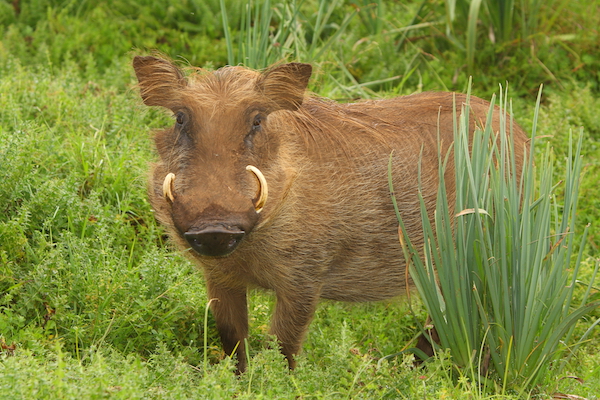
WARTHOGS
Phacochoerus is a genus in the family Suidae, commonly known as warthogs (pronounced wart-hog). They are pigs who live in open and semi-open habitats, even in quite arid regions, in sub-Saharan Africa. The two species were formerly considered conspecific under the scientific name Phacochoerus aethiopicus, but today this is limited to the desert warthog, while the best-known and most widespread species, the common warthog (or simply warthog), is Phacochoerus africanus.[2]
Although covered in bristly hairs, a warthog's body and head appear largely bare, from a distance, with only a crest of hair along the back and the tufts on the face and tail being obvious. The English name "wart"-hog refers to their facial wattles, which are particularly distinct in males. The males also have very prominent tusks, which reach a length of 10 to 25 inches (25 to 64 centimetres); females' tusks are always smaller.[3] They are largely herbivorous, but, like most suids, opportunistically eat invertebrates or small animals, even scavenging on carrion.[4] While both species remain fairly common and widespread, and considered to be of Least Concern by the IUCN, the nominate subspecies of desert warthog, commonly known as the Cape warthog (P. a. aethiopicus) was extinct by around 1865.[5]
WHERE WILL YOU FIND THEM
Warthogs are widely found in sub-Saharan Africa, particularly in open grasslands, savannahs, and woodlands. They are abundant in both East and Southern Africa. Specific locations include Kruger National Park in South Africa, Kenya's Amboseli and Nairobi National Parks, Masia Mara Reserve, and Tanzania's Arusha, Manyara, and Serengeti National Parks. They are also present in Botswana, Mozambique, Zimbabwe, Zambia, and Tanzania.
